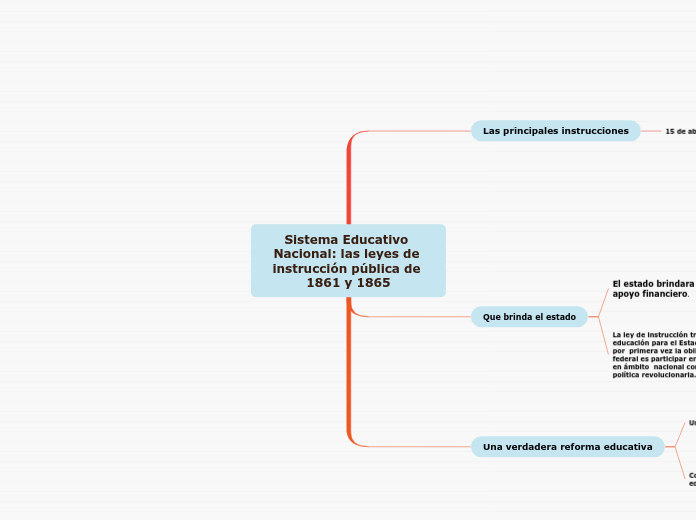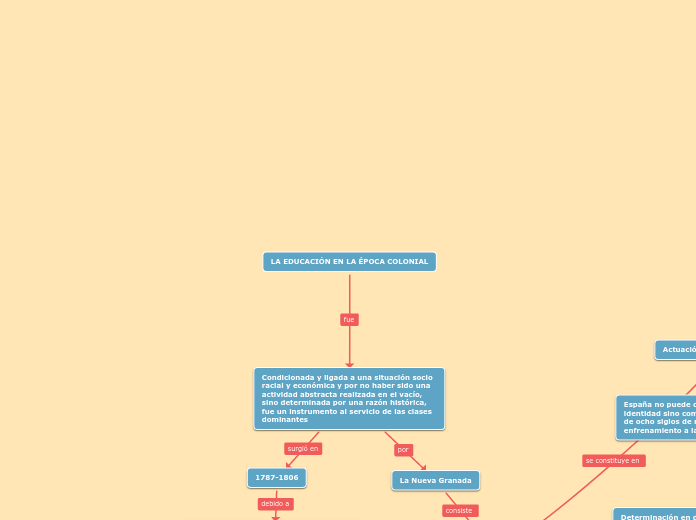Sistema Educativo Nacional: las leyes de instrucción pública de 1861 y 1865
To name your story, you have to think about the overall message and what you want your audience to understand from the story. Also, make it relevant and easy to remember.
Una verdadera reforma educativa
The ending of a story is essential. We all know that if the ending is weak, what happened before loses its importance. So make it unpredictable, but fair. A resolved ending answers all the questions and ties up any loose threads from the plot.
Como comienza a integrar el ministro a la educación.
This is the closure section of the story.
See examples of possible outcomes below:
- all problems have been solved
- it's clear how each one of your characters ends up
- your main character is transformed by the challenge
Comienza por integrarse el ministro de justicia e instrucción publica cuyo frente quedaría la persona mas idónea, tal vez para dirigirlo a los prejuicios religiosos para mantener una educación alejada toda ofuscación dogmática.
Try answering these questions to come up with a closure:
- Have all the problems been solved?
- Is there a clear picture of what happens with each character in the story?
- Has the challenge transformed your main character?
- How do the characters feel in the end?
This is the moment when the main character surpasses the last obstacle and finally faces their greatest challenge.
The climax usually follows one of these patterns:
- realization
- resolution
- choice
Type in your answer.
Esto se dio tras la derrota que sufrió el pensamiento conservador, ante esto el presidente Juárez reformo radicalmente una institución publica que asta entonces había sido eminente eclesiástica ya que se hallo siempre en manos del clero ya que hubo de promover una avanzada legislación que tendría como fin primordial sustraer la educación de la esfera religiosa.
Que brinda el estado
The middle of the story is where you add layers of complications that will lead to the end. Reveal more about the character's journey. Did their personality go through changes? How did they overcome the challenges? And as you build up the story’s central conflict, make it more personal to that character. Also, from the middle act, you have to lead into the final act.
La ley de instrucción trató de rescatar a la educación para el Estado porque reconoce que por primera vez la obligación del gobierno federal es participar en la educación primaria en ámbito nacional con presencia de nuestra política revolucionaria.
Your character(s) need(s) motivation in order to solve the challenge(s).
Esto puede beneficiarse especialmente, a las localidades a las que no haya llegado todavía servicios educacionales.
Why does your character need to confront this challenge? What does he/she expect to accomplish by solving it?
See a few examples:
- will marry in 3 days
- can fix the mistakes of the past
El estado brindara apoyo brindara apoyo financiero.
Each story has a main character and that character usually needs to solve a problem or challenge. The character's challenge is the one that creates tension throughout the story.
El gobierno federal inspecciono la principal labor docente en las regiones y territorios para asi construir escuelas para niños y niñas y asi proporcionar fondos para ayudar a las escuelas apoyadas por organizaciones y municipios ya que el mismo gobierno federal apoyará en el estudio donde se asignarán profesores de niños y niñas para recibir educación básica en pueblos cortos sin escuelas.
Type in any other challenges which other characters in the story need to face.
Estos fondos serán apoyados por organizaciones benéficas para el municipio.
In most stories, there are 3 challenges. The number 3 is a mystical number symbolizing completeness. Try to come up with interesting challenges with which your character needs to struggle.
See a few examples below:
- turns into a werewolf at night
- is sent back in time
Las principales instrucciones
In the beginning of the story (or the exposition), you will need to introduce the setting and characters. You might also want to introduce the main conflict. This part of the story is important because it gives the reader necessary background information and maybe even a first insight into a character’s personality.
15 de abril de 1861
The setting (time & place) of a story can change throughout the plot.
Que apoyo brindara el gobierno federal
Sensory details include sight, sound, touch, smell, and taste. These details are important because they create depth in your setting.
See a few examples below:
- the smell of fresh bread
- the scent of freshly cut grass
- rain falling onto the windshield etc.
Con esta ley se trato de rescatar la educación para el estado.
Los artículos del 8º al 15º se dedican a describir los contenidos de cada una de las escuelas especiales y profesionales.
El mismo gobierno federal brindara apoyo al aprendizaje para niños y niñas que están destinados a recibir educación básica en pequeños pueblos sin escuelas.
Que abrió el gobierno federal
The weather is an important element in your story because it can highly influence the ambiance and the mood of the characters.
Abrió escuelas
Y niñas
Las bases de esta enseñanza serán las siguientes: lectura, escritura, lectura de la Constitución, aritmética, sistema legal de pesos y medidas, geografía, higiene con sus relaciones con la economía doméstica y con la moral, dibujo de animales, idioma español, francés, inglés italiano, costura y bordado, canto, música y baile, declamación, ejercicios gimnásticos, jardinería, dorado de cuadros, construcción de flores artificiales, composición de imprenta.
Artículo 29 dice que la enseñanza secundaria de niñas se hará por cuenta del gobierno en los colegios llamados de niñas y de las vizcaínas.
Para niños
Quienes fueron inspeccionadas por el gobierno federal
Your story can take place wherever your imagination will take you to.
For example: in an elevator, in an enchanted forest, etc. Don't forget to give details of the environment each time the setting changes, otherwise, the story can be confusing. Also, mention the seasons as each of them has unique weather and events.
El territorio
La region










